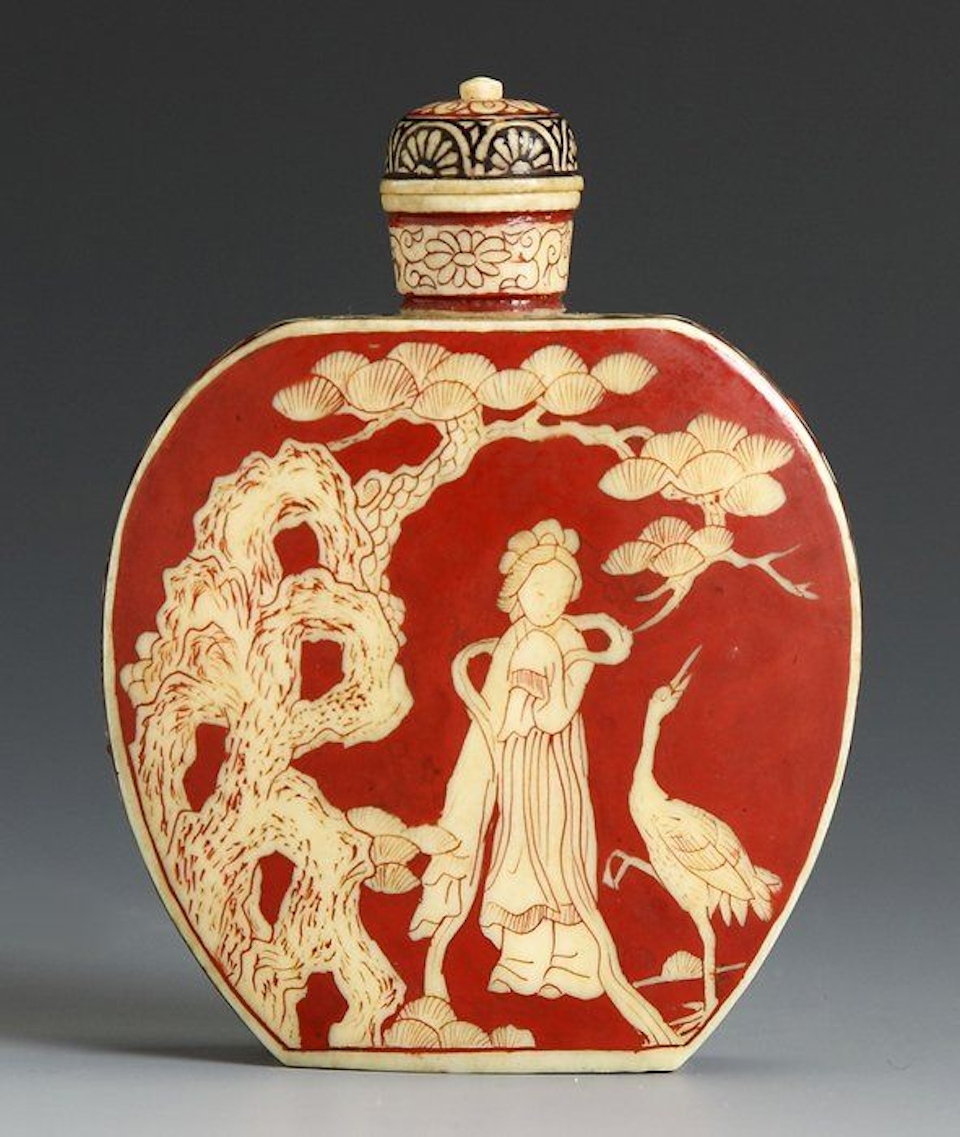






[About]
Japanese snuff bottles have a rich history intertwined with cultural, social, and artistic influences. Originating from China, snuff bottles were introduced to Japan during the Edo period (1603-1868). Initially, they served a practical purpose as containers for powdered tobacco, which gained popularity among the elite as a luxury item and symbol of status.
During the Edo period, Japan was under strict isolationist policies, limiting foreign trade and contact. Consequently, Japanese artisans adapted Chinese snuff bottle designs to suit local tastes and preferences, incorporating traditional Japanese motifs, techniques, and materials. These adaptations led to the emergence of uniquely Japanese snuff bottle styles, distinct from their Chinese counterparts.
Japanese snuff bottles evolved into exquisite miniature works of art, reflecting the craftsmanship and aesthetic sensibilities of the period. Skilled artisans employed various techniques such as lacquerwork (urushi), metalwork (tetsu), ceramics (yakimono), and Shibayama-style inlay (Shibayama zōgan) to create intricate designs on the bottles. The motifs depicted on these bottles ranged from natural landscapes and seasonal scenes to mythological creatures and auspicious symbols, showcasing the diverse artistic traditions of Japan.
During the Meiji period (1868-1912), Japan underwent rapid modernization and cultural exchange with the West, influencing the production and style of snuff bottles. Western motifs and materials began to appear alongside traditional Japanese designs, reflecting the fusion of Eastern and Western aesthetics.
However, with the decline of snuff use and the introduction of cigarettes in the late 19th and early 20th centuries, the demand for snuff bottles waned, leading to a decline in production. Despite this, the art of Japanese snuff bottles persevered, with collectors and enthusiasts appreciating their historical significance and artistic value.
In contemporary Japan, snuff bottles continue to be cherished as prized collectibles and cultural artifacts, revered for their craftsmanship, beauty, and historical significance. They serve as tangible reminders of Japan's rich artistic heritage and the enduring legacy of traditional craftsmanship in the modern era.



